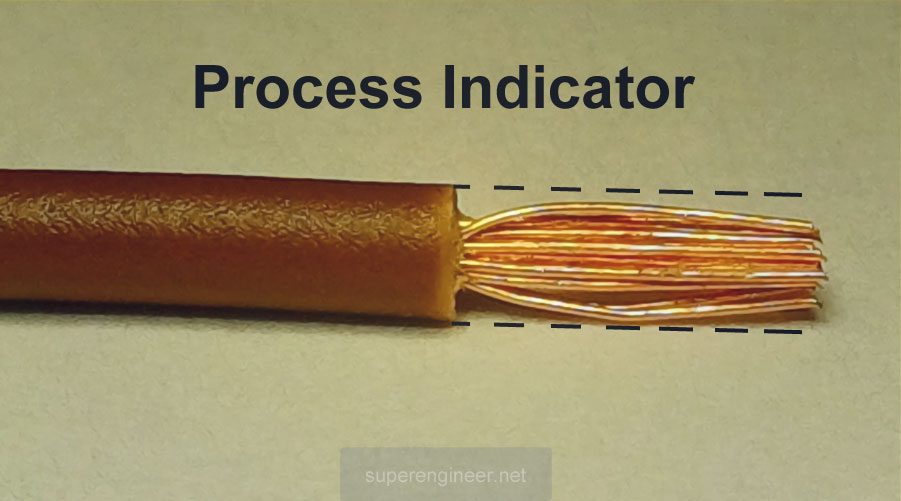Introduction
The electronics industry, and to some extent the electrical industry, has quality requirements largely defined by standards developed by the GEA (IPC) organisation.
The most well-known of these include IPC-A-600, IPC-A-610, J-STD-001, and IPC/WHMA-A-620. These standards introduce concepts such as order of precedence, product classes, and acceptance conditions. This makes it easier to assess the quality of electronic assemblies. Regarding the conditions, the following cases are distinguished:[1][2][3]
- Target condition - the ideal state. Currently removed from certain standards, such as IPC-A-610 and IPC/WHMA-A-620. The reasons are discussed in the article: IPC-A-610 Target Condition Removed.
- Acceptable condition - not always perfect, but sufficient for the proper functioning of the product. The previously removed target condition is now considered one of the acceptable conditions, meaning the acceptable condition inherently "includes" the target condition.
- Process Indicator - a condition that is not a defect but deviates from full acceptability.
- Defect, referred to in IPC-A-600 as nonconforming. This is a condition that negatively affects the product's form, fit, or function (FFF) and requires disposition such as repair or rework, scrapping, or conditional acceptance.
The focus of this article is the Process Indicator. We explain what it is and how it should be interpreted.
Process Indicator
A Process Indicator is a condition that is not a defect but is also not classified as an acceptable condition. This state does not impact the "form, fit, or function" (FFF) of the product but signals potential variations in the manufacturing process.
According to IPC standards[1][2][3], a Process Indicator can be described as follows:
- Caused by material, design, or process limitations. Variability in material parameters and material imperfections (e.g., moisture in PCB laminates) can contribute to this condition. Other contributing factors include product design or process variations, such as machine parameter fluctuations, tool wear, or manual assembly operations.
- Should be monitored. Individual occurrences of Process Indicators do not require disposition. However, these indicators should be monitored, and if significant deviations or trends arise, the process should be analyzed and improved accordingly.
- Disposition is not required. Single instances of Process Indicators do not require disposition such as: rework, repair, scrapping, or conditional acceptance. There is no obligation to address them. However, if the manufacturer decides to take action, it is allowed but not required by IPC. Since a Process Indicator is not considered a defect, individual occurrences should not be a basis for product rejection.
In summary: a Process Indicator is a tolerated condition as long as it occurs sporadically. Its presence does not disqualify a product but serves as informational feedback for the manufacturer. If the number of Process Indicators increases, it signals the need for process analysis and improvement. Single occurrences should not be treated as defects, and customers should not reject or return products containing them.
Examples of Process Indicators
A solder joint contains a small visible void (air bubble, blow-hole) while meeting all other requirements. This phenomenon may result from increased moisture in the PCB, improper preheating temperature, or poor quality of plated through-holes. It is as a Process Indicator in Class 2 and 3 according to IPC-A-610J, section 5.2.2.

A stranded wire (12 strands) with one broken strand. The number of damaged strands does not exceed the limits specified in the respective standard tables. This is classified as a Process Indicator for Class 1 and 2 according to IPC-A-610J, section 6.3.2.1, and IPC/WHMA-A-620E, section 3.2:

Conclusion
The Process Indicator condition in IPC standards is highly beneficial for product quality and reliability. Both manufacturers and customers receive clear guidance that certain conditions occurring in products are tolerated as long as they appear in limited quantities. There is no need for corrective action—monitoring is sufficient. This approach helps reduce unnecessary repair or scrapping costs.
Additionally, IPC standards require monitoring of Process Indicators and implementing corrective actions when necessary. In this regard, it is useful to explore tools and methodologies such as Statistical Process Control and the Control Plan.
References
- "IPC-A-600: Acceptability of Printed Boards," Rev. K, IPC International Inc. USA, 2020.
- "IPC-A-610: Acceptability of Electronic Assemblies," Rev. J, IPC International Inc. USA, 2024.
- "IPC/WHMA-A-620: Requirements and Acceptance for Cable and Wire Harness Assemblies," Rev. E, IPC International Inc. USA, 2022




